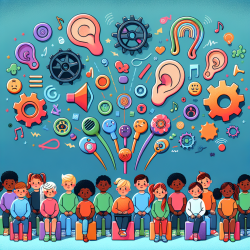Introduction
As practitioners dedicated to improving the lives of children, understanding the factors that contribute to emotional eating in adolescents is crucial. A recent study titled "Negative emodiversity is associated with emotional eating in adolescents: An examination of emotion dynamics in daily life" sheds light on the relationship between emotional experiences and eating behaviors in adolescents. This blog will explore the findings of this study and how practitioners can use these insights to enhance their therapeutic approaches.
Key Findings from the Study
The study utilized Ecological Momentary Assessment (EMA) to examine individual differences in emotion dynamics among 158 adolescents, primarily Hispanic, aged 14-17. The research focused on three within-person dynamic characteristics of emotions:
- Baseline Levels: The average level of emotional experiences.
- Intraindividual Variability (IIV): The degree of fluctuation in emotional experiences around the baseline.
- Emodiversity: The variety of different types of emotions experienced by an individual.
The results indicated that higher negative emodiversity was a significant predictor of emotional eating in adolescents. This suggests that the variety of negative emotions experienced in daily life plays a crucial role in emotional eating behaviors.
Implications for Practitioners
Understanding the dynamics of negative emotions can help practitioners develop more targeted interventions for adolescents struggling with emotional eating. Here are some practical steps practitioners can take:
- Monitor Emotional Diversity: Encourage adolescents to track their emotions daily, noting the variety and intensity of negative emotions they experience.
- Develop Emotion Regulation Skills: Teach adolescents techniques such as mindfulness, cognitive restructuring, and relaxation exercises to help manage diverse negative emotions.
- Personalized Interventions: Use the insights from emotion tracking to tailor interventions that address specific emotional triggers for each adolescent.
Encouraging Further Research
While this study provides valuable insights, further research is needed to explore the complexities of emotional eating and its relationship with emotion dynamics. Practitioners are encouraged to stay informed about the latest research developments and consider participating in studies that explore these dynamics in different populations and settings.
Conclusion
By understanding the role of negative emodiversity in emotional eating, practitioners can better support adolescents in developing healthier eating habits and emotional regulation skills. This study highlights the importance of considering individual differences in emotional experiences and offers a data-driven approach to improving therapeutic outcomes for adolescents.
To read the original research paper, please follow this link: Negative emodiversity is associated with emotional eating in adolescents: An examination of emotion dynamics in daily life.










